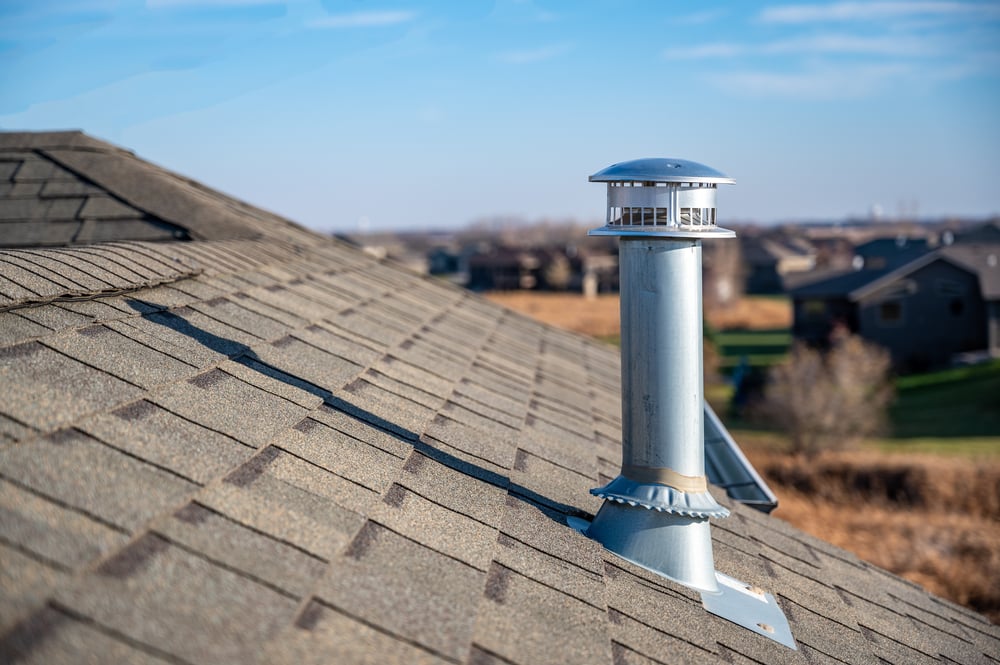How Proper Ventilation in Plumbing Systems
How Proper Ventilation in Plumbing Systems
Blog Article
They are making a number of great annotation relating to Why Plumbing Air Vents Are Important in general in the article following next.

Appropriate ventilation in plumbing systems is usually ignored, yet it is essential for maintaining the performance and security of your home's pipes. Air flow aids control air pressure, protect against the build-up of dangerous gases, and guarantee the reliable elimination of waste. In this guide, we will explore the significance of appropriate pipes air flow, exactly how it functions, and the benefits it gives your plumbing system.
Understanding Air Flow in Plumbing
Air flow in plumbing refers to the network of pipelines that allow air to flow via the drainage system. These vents offer numerous purposes, consisting of managing atmospheric pressure within the pipes, preventing sewer gases from entering the home, and aiding in the smooth circulation of wastewater.
Exactly How Air Flow Works in Pipes Systems
Air Pressure Regulation
Appropriate ventilation maintains balanced atmospheric pressure within the plumbing system. When water streams with pipelines, it displaces air. Without ample air flow, this displacement can produce negative pressure, bring about reduce drains or siphoning of water from traps, which can create unpleasant smells to seep right into the home.
Preventing Drain Gas Build-up
One of the most critical functions of plumbing vents is to avoid sewer gases, such as methane and hydrogen sulfide, from collecting within the home. These gases can present major health and wellness threats and are extremely combustible. Vent pipelines enable these gases to get away safely outside.
Aiding in Waste Elimination
Ventilation helps in the efficient elimination of wastewater by stopping airlocks in the water drainage system. When air can stream freely via the vents, it enables water and waste to flow efficiently with the pipes, decreasing the risk of clogs and back-ups.
Types of Pipes Vents
Main Heap Vent
The primary stack air vent, also called the vent pile, is the key vent in a plumbing system. It extends from the primary drainpipe line up with the roofing, permitting gases to get away and fresh air to get in the system.
Branch Vent
Branch vents connect to the main stack vent and offer private components, such as sinks, toilets, and showers. These vents guarantee that each fixture has ample air flow to function appropriately.
Air Admittance Valve (AAV).
An Air Admission Valve (AAV) is a one-way valve that enables air to go into the pipes system without the requirement for a standard air vent pipeline expanding via the roofing. AAVs are generally made use of in renovations or locations where mounting a common air vent is unwise.
Signs of Poor Air Flow in Pipes.
Slow Draining Fixtures.
If your sinks, tubs, or commodes are draining slowly, maybe a sign of inadequate ventilation. Inadequate air circulation can create a vacuum cleaner impact, making it challenging for water to drain pipes appropriately.
Gurgling Appears.
Gurgling sounds originating from drains are commonly a result of air being sucked with water traps as a result of negative stress in the pipes. This is a clear indication of insufficient air flow.
Undesirable Odors.
Sewage system odors inside your home are a red flag that your pipes system is not properly ventilated. This might suggest that sewer gases are not being appropriately vented outside, causing possibly harmful problems.
Typical Ventilation Mistakes.
Inadequate Vent Sizing.
Using small air vent pipelines can result in inadequate air circulation and pressure imbalances in the system. It's necessary to use vents that fulfill the particular requirements of your plumbing system.
Improper Vent Positioning.
Putting vents too far from the fixtures they serve can lower their effectiveness. Proper placement makes certain that air can stream easily and successfully through the system.
Ignoring Code Needs.
Building codes supply particular standards for pipes air flow. Overlooking these codes can lead to a system that fails to work appropriately and might lead to expensive repairs or health hazards.
Advantages of Appropriate Air Flow.
Boosted System Efficiency.
Correctly ventilated plumbing systems operate more effectively, with fewer blockages, faster draining, and less stress on the pipes. This efficiency extends the lifespan of the pipes system.
Improved Air Top Quality.
By preventing drain gases from entering your home, proper ventilation adds to better interior air quality, making your living environment healthier and extra comfortable.
Avoiding Water Damage.
Appropriate ventilation aids avoid water from being siphoned out of catches, which can lead to drain gases getting in the home and triggering water damages in time.
Steps to Make Certain Appropriate Air Flow.
Consulting Pipes Codes.
Constantly consult regional plumbing codes when creating or customizing your plumbing system. These codes give the required standards for proper venting and guarantee your system fulfills safety standards.
Routine Examination and Upkeep.
Normal examinations can help identify prospective ventilation issues before they end up being major issues. Upkeep tasks, such as cleansing vent pipelines and checking for blockages, are important for maintaining the system in good working order.
Specialist Installation.
For brand-new installations or major alterations, it's important to employ a professional plumbing. They have the know-how to guarantee the air flow system is properly designed and mounted according to code.
Conclusion.
Correct air flow is a vital part of any type of pipes system, guaranteeing that it operates successfully and securely. By recognizing the significance of ventilation, identifying the indications of poor air flow, and taking steps to maintain your system, you can protect against expensive concerns and secure your home's air quality.
Understanding the Role of Your Plumbing Vents in the Drainage System
The plumbing system in your home is more than just the kitchen sink, toilet, and bathroom. Some problems that arise within home plumbing are hard to detect because homeowners may not understand potential causes.
One part of the plumbing system that could cause you endless problems is the venting. The drain lines that run through your home and drain wastewater need proper venting to function properly. Faulty plumbing vents can lead to several problems that require the expertise of a plumber to check them out. Before finding experienced plumbing services, there are a few things to learn about plumbing vents.
Why vents are vital
Vents in the plumbing system lead to an outside area such as the roof or the back. The function of these vents is to keep sewer gases away from the drain pipes. They also establish seals in the drainage pipes that prevent the sucking back of waste gases into the home. Venting in the plumbing system also allows oxygen to get into the drainage system, which is an essential component in the breakdown of waste matter. The vents also ensure that the air pressure within the drainage system remains balanced, facilitating the flow of wastewater.
Possible problems
When the plumbing vents are problematic, one of the consequences is imbalanced water levels in the toilet. If you notice that the levels in the toilet bowl rise and fall all the time, then there may be something wrong with the vents.
Another issue is air bubble formation within the toilet. In most cases like these, the drain pipes are not receiving enough air. Lack of air pressure equalization is what leads to water flow problems. If you come across such issues in your home, make sure you call professional plumbers, such as the ones from Perfection Plumbing & Drain Cleaning Ltd.
Potential causes
Several scenarios can lead to some of the plumbing problems that homeowners suffer because of venting. One such scenario is the use of incorrectly sized vents. Usually, vents are the same size as the drain line to facilitate proper venting. Vents that are too small will lead to some plumbing issues. Another potential cause is fixtures that are not close enough to the vents. In this scenario, air forces itself through the traps of other fixtures, leading to gurgling sounds from toilets and sinks.
Most of these problems also happen with clogged vents. Tree leaves and debris can cause clogging when they make their way down a vent. Unclogging plumbing vents is a service that you can entrust to Saskatoon plumbers. They will know how to snake down vents and remove clogging stuck in fixtures.

Hopefully you enjoyed our article on Essential Plumbing Vent Pipes: Understanding Their Role. Thanks a lot for taking time to read through our piece of content. Remember to take the opportunity to promote this blog post if you liked it. Thanks a lot for taking the time to read it.
Click Here Report this page